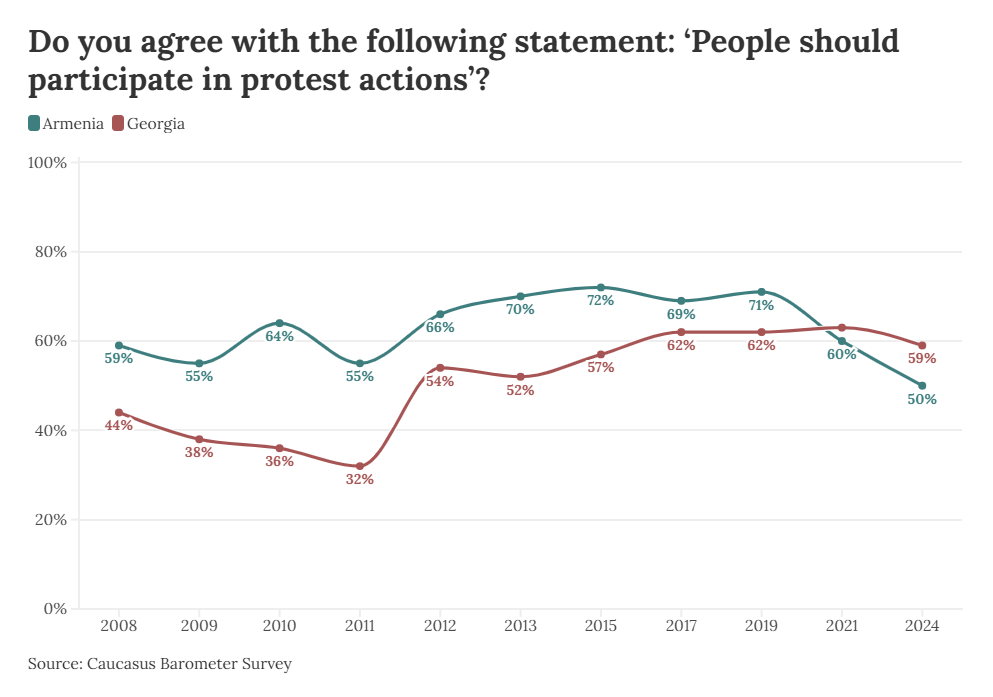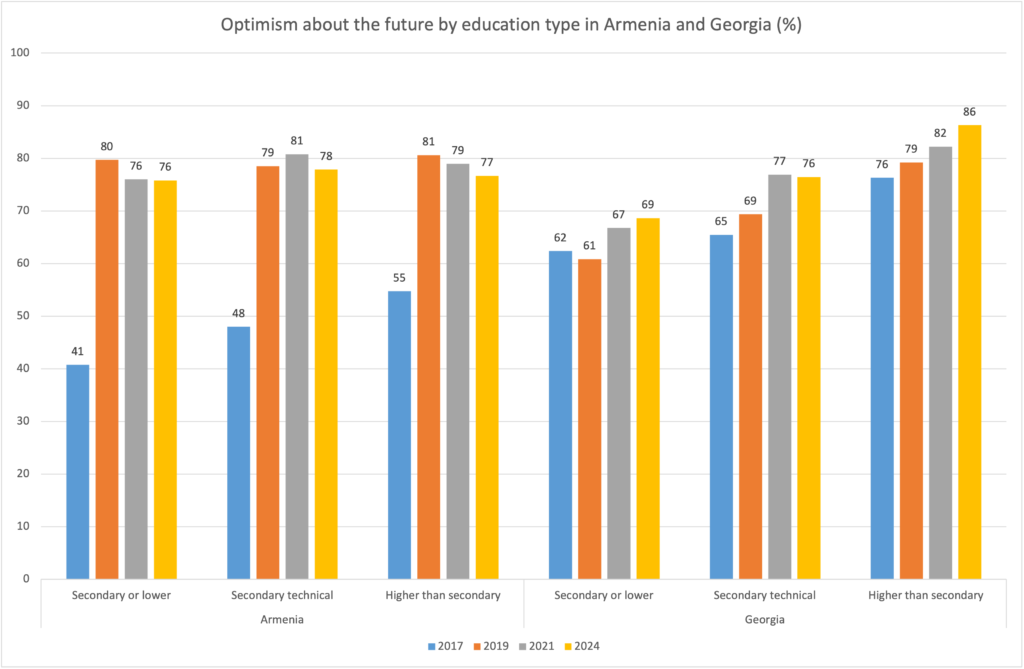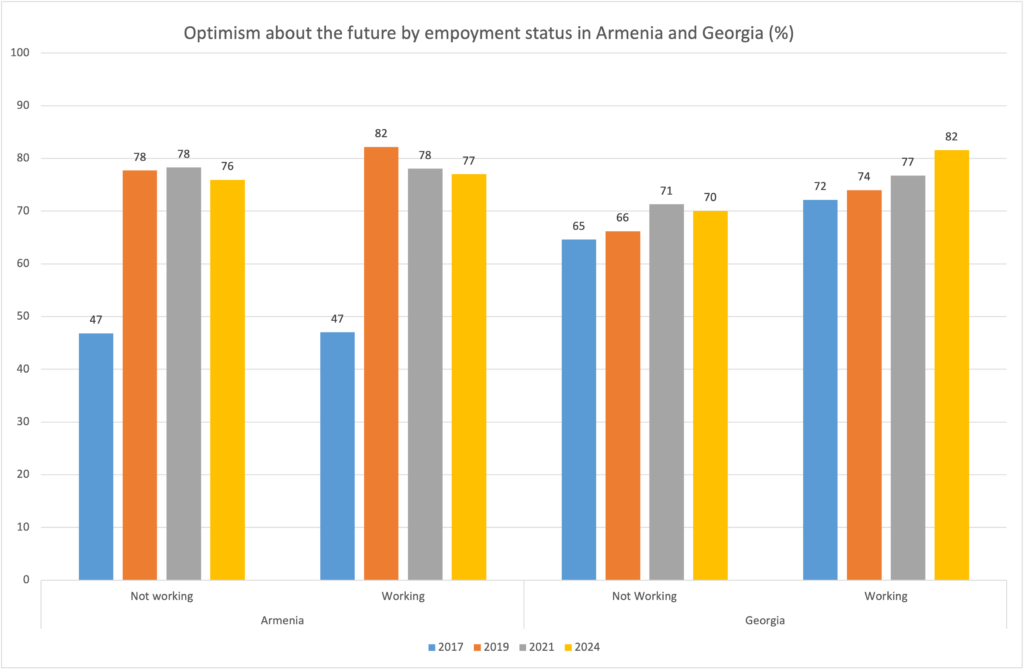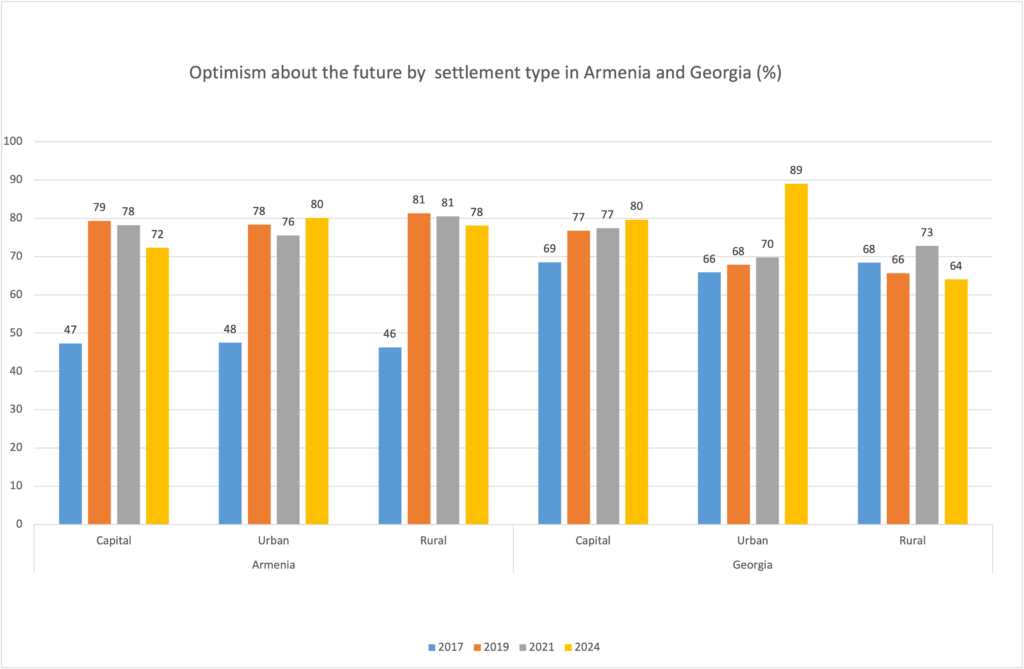Note: This article first appeared on the Caucasus Data Blog, a joint effort of CRRC-Georgia and OC Media. This article was written by Otar Jintcharadze and Nino Anchabadze, Junior Researchers at CRRC Georgia. The views presented in the article are the authors’ alone and do not necessarily represent the views of CRRC Georgia or any related entity.
Levels of happiness in Georgia are associated with youth, wealth, and religiosity, according to data from the 2024 Caucasus Barometer.
While more people indicate being happy than sad in Georgia, this varies by age, wealth, and religion. These social and demographic factors tend to be in line with findings from other contexts. Higher economic wealth is generally associated with greater happiness, as is one’s religiosity. The research on age and happiness by contrast, shows a more complicated set of patterns.
According to the 2024 Caucasus Barometer, 66% of Georgians reported feeling happy, rather than sad, while 10% were more sad than happy — an additional 24% reported being neither happy nor sad. This was the highest reported level of happiness in the past 14 years, while in turn, the percentage of individuals who felt unhappy — which was at its lowest in 2017 — has only slightly increased since.

However, happiness varies with demographic and social variables.
The Caucasus Barometer data suggests that happiness decreases with age. Older individuals (55+) are 19 percentage points less likely than young people (18–34) and 16 percentage points less likely than people aged 35–54 to report feeling happy.
The data also demonstrates a positive correlation between wealth and happiness. Individuals in the fourth quartile of asset ownership are 15 percentage points more likely to report feeling happy compared to those in the bottom quartile.

The Caucasus Barometer also asked respondents about the importance of religion in their daily lives. According to the data, Georgians who consider religion ‘very important’ are eight percentage points more likely to report being happy compared to those who consider religion as only ‘rather important’ or ‘not important’.

Education level, ethnicity, employment status, and settlement type were not significant predictors of happiness in Georgia.
In addition, one’s reported political beliefs and the media a person consumes were notably not associated with happiness. Similarly, whether family members live abroad was not a significant predictor of happiness.
Instead, as the data makes clear, happiness in Georgia is associated with age, wealth, and religiosity, as younger people tend to report greater life satisfaction, wealthier individuals are significantly more likely to describe themselves as happy, and more religious individuals consistently report higher well-being.
Note: The data in this article comes from a series of regression models. The first contains the following demographic variables: gender (male, female), settlement type (capital, urban, rural), age group (18-34, 35-54, 55+), ethnicity (Georgian, ethnic minority), employment status (employed, unemployed) and wealth (divided into quantiles). Subsequent models added whether or not respondents reported religion as very important or not (not at all important, not important, rather important) in their daily lives. The data used in this article is available here.









